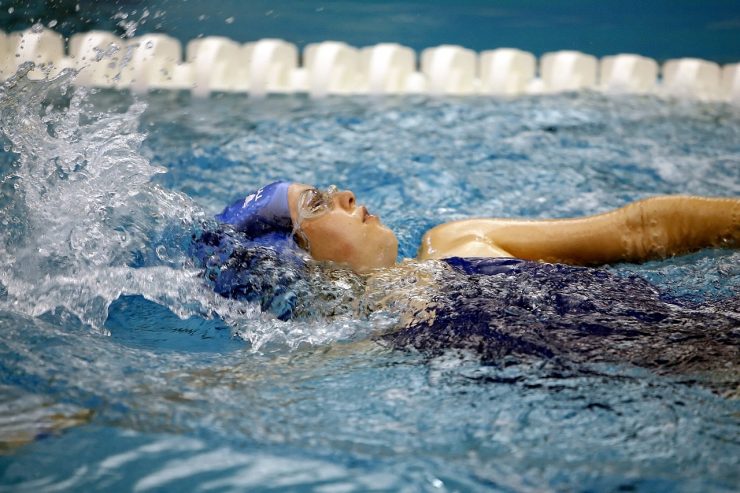There are teenagers everywhere. They sit in the bleachers, damp in layered clothes, munching on dried mango and Cliff bars. It’s the final session of our three-day swim meet and these adolescent female athletes have just finished warmup. I wander about the pool deck trying to take note of how they are feeling.
Jen’s scrolling Instagram, briefly paused on a photo of her best friend’s Unicorn themed birthday cake. A series of selfies featuring matching swim caps are being hash-tagged and posted by a trio of female teammates. Fourteen year old Beth is laughing at the latest Snapchat story of Kylie Jenner. They are waiting, I think, waiting before plunging headfirst into the cool, chlorinated water. Waiting for their biggest race of their year. Or maybe, they are waiting for the next “like” or “comment.”
I’m Danica, a third year OISE Phd student completing the Collaborative Specialization at the Knowledge Media Design Institute (KMDI). As a swim coach, female athlete and high-school gym teacher, I come to my doctoral research curious and excited to blend my passions in education and sports. I wonder; How are female athletes ages 13-17 using social media?
“How are teenage girls redefining what it means to ‘be a girl’ and ‘be an athlete?’ How does using social media aid or exacerbate the demands of being a teenage female athlete?”
Inspired by the athletes I’m privileged to work with, my doctoral research project seeks to develop a stronger understanding of teenage athletes and how their participation in competitive sports is mediated through social media technologies.
Across Canada, 99% of youth have access to the Internet and by the end of grade eleven, 85% of teenagers own smartphones. Meanwhile, social media is greatly impacting the world of sports. Social media is employed by sports stakeholders as a means to digitalize communication with audiences worldwide. For example, social media is employed by teams (e.g.: @WashMystics, @MapleLeafs), organizations and institutions (e.g.: @youtholympics, @Varsity_Blues), athletes (e.g.: @tessavirtue, @serenawilliams), sports companies (e.g.: @nikewomen, @TSN_Sports) and fans. In Canada, swimming is the most participated female sport but the number of female athletes over the age of fifteen in any sport has steadily decreased to record lows. Sport has always been dominated by men. Men receive more funding, more resources, and more media coverage (print, radio, television, and online) than women. Considering these inequities, this research will highlights the benefits and challenges female athletes face while using popular platforms like Instagram.
The Collaborative Specialization program with KMDI given me a forum to discuss research interests with people invested in similar topics. Through engaging in critical conversations about research in technologies, and specifically social media, I’ve been able to question my bias and taken-for-granted assumptions about my research topic as well as opening myself up to new ideas and concepts. KMDI has also connected me to professors and instructors who have provided resources and academic support. Importantly, I’ve expanded my repertoire of research methodologies in and across digital landscapes.
I take another look around the pool deck and smile. The girls are grabbing their goggles and going to the blocks. It’s race time.
Danica Vidotto (@DanicaOISE) is a doctoral student completing a collaborative degree at the Ontario Institute for Studies in Education (OISE) and through the Faculty of Information iSchool: Knowledge, Media, Design Institute at the University of Toronto.

